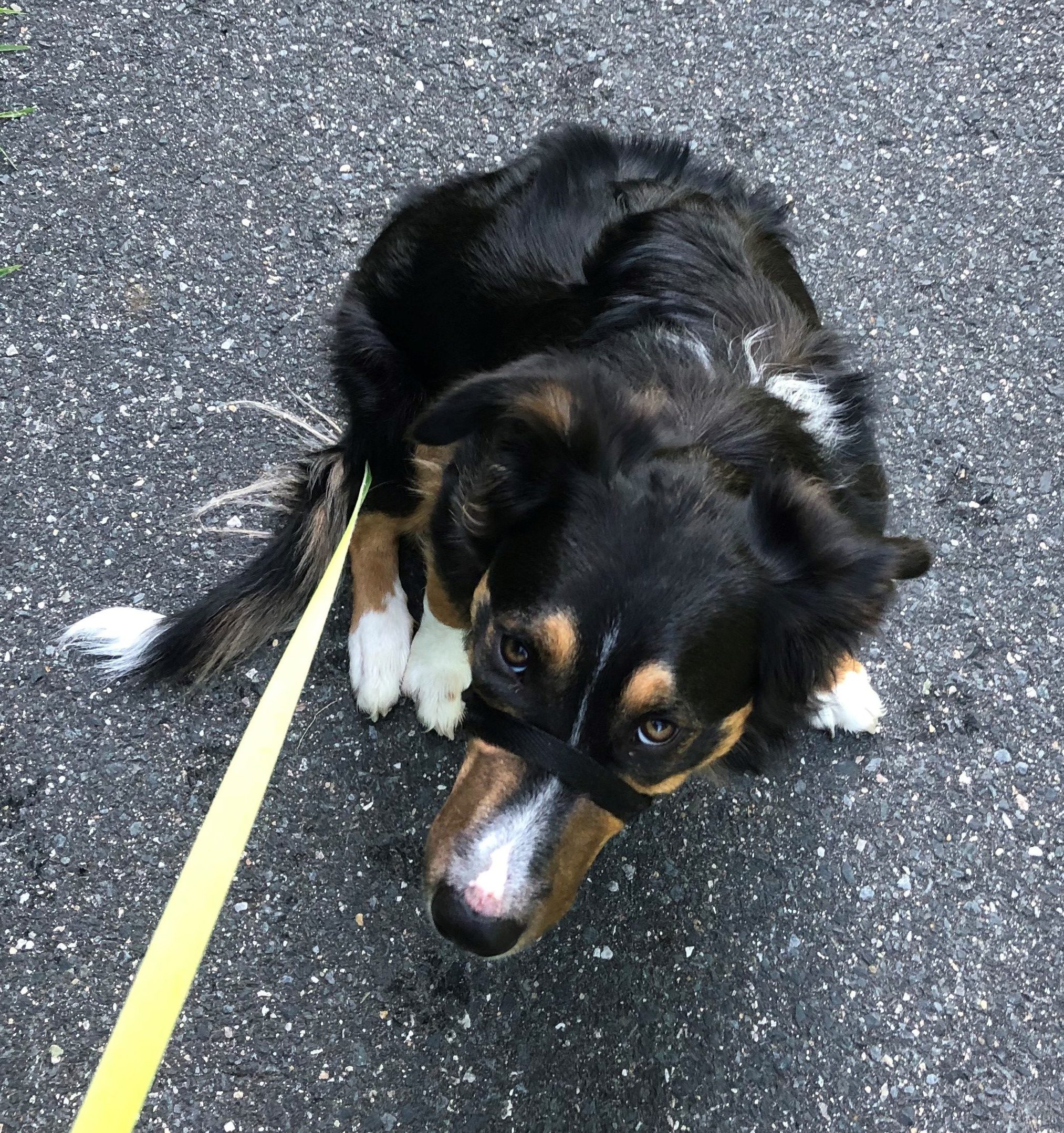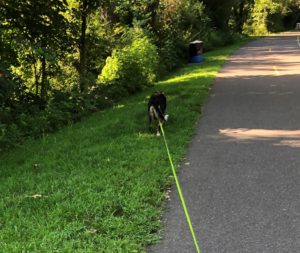The most important thing in communication is hearing what isn’t said.
-Peter Drucker
Waldo and I took a day off from the rail-trail and, today, we return for what, for us, is a short walk. My ankle is a little sore, but I figure I can do two miles without too much problem and that’s our goal. It’s early morning, a bit on the cool side, compared to the heat that’s recently baked us, the sky is clear and the wind is light. Waldo is very excited to get going as soon as he gets out of the car, and I hobble along behind, as best as I can, towed by a taut leash.
The birds are out and I swear I can hear one call, “Emmy,” in a high-pitched raspy voice. My granddaughter’s name is Emily and I cannot let this go by without comment. “Emmy!” I call out, imitating the sound as best as I can.
“Emmy,” comes a reply.
“Emmy?” I return.
“Emmy!” comes the birdcall.
This goes on for a minute or so, then the Emmys fade into the distance as Waldo and I continue on down our path. One might think that this is syntactically even more limited than “I am Groot,” but I’m not so sure. I remember watching a skit on “Laugh-In” (a predecessor of SNL), decades ago, where Ruth Buzzi and Arte Johnson (or maybe it was Lily Tomlin and Henry Gibson?) carried on an entire conversation sitting on a park bench, using nothing more than the single word “Oh.” Now, I’m not saying that the Emmy-bird and I had a meaningful discourse on the intricacies of relativistic astrophysics, but The Emmys flowed back and forth as if there was real communication there. Not that I have more than the foggiest idea about what either one of us was saying, however. I think it was in the vein of, “I am here!” and “So am I!” followed by, “I’m doing well, you?”, with maybe a “What do you want?” or a “You friendly?” Who knows? The point is, there seemed to be a give and take that had limited content.
Waldo and I, of course, have a much broader vocabulary and communicate in much more depth. In addition, we have body language and eye contact as well as tone of voice to deepen the conversation. I use words and hand signals, Waldo uses more action and occasional nonverbal utterances to tell me what he needs (although, now that I think about it, the noises he makes are usually more punctuation — most often exclamation marks). I am sure that he also pays attention to my body language that I don’t intentionally transmit, and I read a lot into his movements and facial expression that is ill-defined, but informative. We talk to each other, not only through the language centers of our brains (Waldo obviously has one because he does respond appropriately, when he wants, to my spoken words), but also through other parts of our brains. In fact, most of our communication is done nonverbally. It’s a subliminal intuitive communication that I think can be best described, as I’ve mentioned before, as grokking. We human beings do it amongst ourselves as well, it is omnipresent, but we’re so distracted by words that we barely notice and it remains subconscious most of the time.
I look at Waldo waltzing down the grass on the side of the trail. His tail tells me he’s happy, his pace says he’s excited, his posture telegraphs confidence and comfort, his nose gliding close to ground with perked-up ears and occasionally lapping tongue make it obvious that his auditory, visual, gustatory and olfactory senses are focused on something right in front of him and he is curious. He’s a happy, energized puppy. He stops and briefly turns to look at me. For an instant, our eyes meet and I know he sees an old man who is calm, plodding (in a halting kind of way) engaged with what’s happening and who has his back. His brief glance signals me that he knows that I am responsible for making this happen and he is grateful for it. And then he is back doing his Waldo thing.
Yeah, I speak Waldo and he speaks me.



